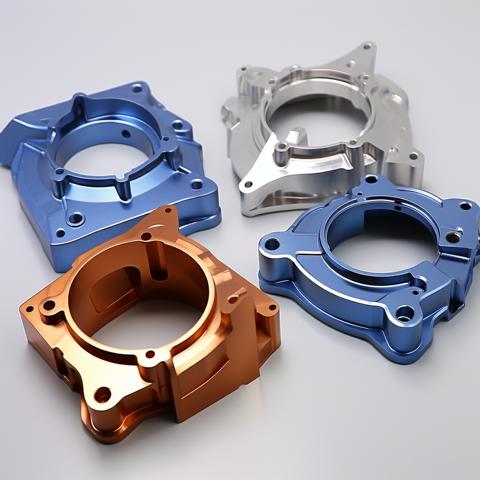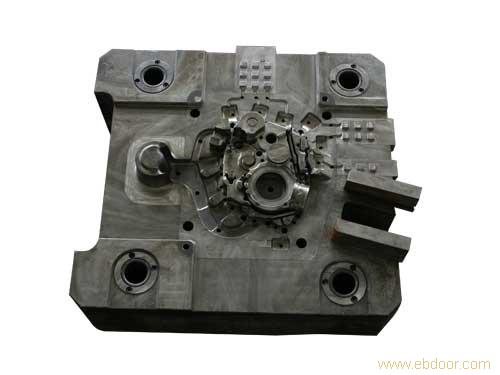Mastering Precision Manufacturing with Zinc Die Casting.
In the fast-paced world of production, zinc die casting has emerged as a cornerstone for making complicated metal components with precision and speed. This essay will provide a complete understanding of zinc die casting.
What is Zinc Die Casting
Zinc die casting is a metal casting method that produces precise components or parts from zinc as the primary material. This technology is widely used in a variety of sectors due to zinc’s unique qualities, as well as the efficiency and cost-effectiveness of the die casting method.
Advantages of Zinc Die Casting
One of the primary benefits of zinc die casting is its cost-effectiveness. The raw material, zinc, is very affordable, making it an appealing option for firms looking for efficient yet cost-effective solutions.
High Precision and Dimensional Stability: Zinc die casting has exceptional precision and dimensional stability, allowing delicate and complicated shapes to be accurately recreated. This feature makes it particularly useful in areas where precision is essential.
High Strength-to-Weight Ratio: Despite their lightweight nature, zinc die cast components are extremely strong, providing longevity without compromising the total weight of the finished product. This benefit is especially useful in automotive and aeronautical applications.
Excellent Surface Finish: Manufacturers use zinc die casting because it produces components with a smooth and visually pleasing surface finish. This trait is essential in situations where aesthetics are important, such as consumer goods and electronics.
Quick Production Cycles: In manufacturing, time is of the essence. Zinc die casting allows for quick production cycles, guaranteeing that components may be manufactured efficiently and delivered to market quickly, fulfilling the expectations of fast-paced industries.
Zinc Die Casting Process
Overview of the Die Casting Process: Molten zinc is injected into a pre-designed mold under high pressure. This process allows for the fabrication of complex forms with precise tolerances, making it a popular solution for a variety of industries.
Steps for Zinc Die Casting:
Tooling and Mold Design: The process starts with painstaking zinc die casting tooling and mold design, which requires extreme precision. The zinc die casting mold acts as a template for the finished product.
Melting and Injecting Molten Zinc: Once the zinc die casting mold is complete, molten zinc is injected under high pressure. This process necessitates precise temperature management to provide the highest casting quality.
Cooling and Solidification: Following injection, the molten zinc cools and solidifies within the mold cavity. This step establishes the final shape and structure of the component.
Ejection of the Casting: The solidified casting is then ejected from the mold, and any extra material (flash) is removed to create the required shape.
Finishing operations: After casting, further finishing operations such as machining, polishing, and coating may be used to suit specific quality requirements.
Applications for Zinc Die Casting
Automotive Industry: Zinc die casting is widely used in the automotive industry, where lightweight but robust components are critical for improving fuel efficiency and overall performance.
Electronics & Electrical Components: The electronics industry benefits from zinc die casting’s ability to make delicate and tiny components with great precision, which is critical in the ever-shrinking world of electronics.
Consumer Goods: Hair dryer manufacturers will employ zinc die casting parts for their high-speed hair dryers, airflow hair straighteners, and hair straightener brushes. From attractive and durable hardware to ergonomic components, zinc die casting contributes significantly to the quality and aesthetics of consumer goods.
Zinc die cast parts improve the efficiency and dependability of industrial machines, where precision and durability are essential.
Other Industries Using Zinc Die Cast Parts: Aside from these main sectors, zinc die casting is used in a variety of industries, demonstrating its versatility and adaptability.
Material Properties of Zinc
Alloy Composition: The zinc alloy composition used in die casting is carefully chosen to obtain optimal mechanical qualities, ensuring a balance of strength, ductility, and casting ease.
Mechanical Properties: Zinc die cast components have outstanding mechanical properties, such as strong tensile strength and impact resistance, making them ideal for demanding applications.
Corrosion Resistance: Zinc’s corrosion resistance is an important feature in its durability, ensuring that components remain strong even in harsh situations.
Quality Control for Zinc Die Casting
Inspection and Testing methods: Strict inspection and testing methods are required to ensure the high quality of zinc die cast components. To meet demanding criteria, dimensional correctness, surface finish, and structural integrity are all carefully examined.
Ensure Dimensional Accuracy: Precision is the hallmark of zinc die casting. Advanced measurement technologies are used to ensure that components meet accurate dimensions specifications.
Surface Finishing Standards: The aesthetic attractiveness of zinc die cast parts is frequently crucial. Strict adherence to surface finish standards ensures that components meet functional requirements while also having a visually appealing finish.
Sustainable Zinc Die Casting
Zinc Recycling: In the manufacturing industry, sustainability is becoming increasingly important. Zinc’s recyclability helps to promote a more environmentally responsible approach, decreasing environmental effect and the need for new raw materials.
Environmental Benefits: When compared to other manufacturing methods, the zinc die casting process has lower energy usage and greenhouse gas emissions.
Energy Efficiency in the Die Casting Process: Continuous attempts to improve the energy efficiency of the die casting process help to create a more sustainable manufacturing ecosystem that aligns with global environmental objectives.
Challenges and Considerations
Design Considerations for Zinc Die Casting: Designing for zinc die casting necessitates a thorough understanding of the material’s properties. Careful consideration of parameters such as wall thickness, draft angles, and parting lines is critical for successful and cost-effective production.
Differences between zinc die casting and injection molding.
Zinc die casting and injection molding are both manufacturing procedures for producing complicated parts, but they differ greatly in terms of materials, techniques, and applications. Here are the main distinctions between zinc die casting and injection molding:
- Material: • Zinc die casting uses molten zinc alloy made of zinc, aluminum, and copper. The final part is created by injecting molten metal into a mold.
- Injection molding can employ many materials, such as plastics, rubber, and metals. The chosen material is heated and injected into a mold to create the desired shape.
- Process: • Zinc Die Casting: • Molten metal is injected into a mold (die) under high pressure. This technology is ideal for creating precise, detailed, and high-strength metal parts.
- Injection molding: • Molten material (typically plastic or rubber) is injected into a mold under high pressure. This technology is adaptable and widely utilized in the mass manufacture of plastic parts with complicated designs.
- Applications: • Zinc die casting is commonly used to produce precision metal components with complex forms. It is widely used in automotive, electronics, and industrial applications where strength, durability, and intricate characteristics are required.
- Injection molding produces a wide range of plastic products, from small electronics components to larger containers, toys, and automotive parts. • Zinc die castings have high strength, excellent dimensional stability, and corrosion resistance. The material’s qualities make it ideal for applications demanding endurance and precision.
- Injection Molding: • Material characteristics vary by material type. Plastics, for example, can have a wide range of properties, including flexibility, rigidity, transparency, and a variety of colors.
- Tooling and Setup: • Zinc Die Casting: • Tooling entails constructing strong molds from materials such as steel. The setup can be more complicated and costly, especially for elaborate or large components.
- Injection molding requires a plastic mold, usually composed of steel or aluminum. The setup costs vary depending on the complexity and size of the mold, however injection molding is widely regarded as more cost-effective for high-volume production.
- Production Speed: • Zinc die casting has short production cycles, making it ideal for mass production of metal components.
- Injection molding is a fast procedure for making huge quantities of plastic parts. The cycle time varies according on the material, part size, and complexity.
To summarize, zinc die casting and injection molding are independent procedures designed for different materials and applications. Zinc die casting is used for generating detailed and durable metal components, whereas injection molding is a versatile process used largely for producing large quantities of plastic parts. Each procedure has advantages and is chosen based on the individual needs of the final product.
Potential Issues and Solutions: Despite its benefits, zinc die casting may encounter issues such as porosity, shrinkage, and tooling wear. Manufacturers use a variety of techniques and technology to address these difficulties and improve the casting process.
Market Trends and developments: Zinc die casting manufacturers must stay on top of market trends and embrace new developments. From sophisticated metals to 3D printing technologies, ongoing innovation leads to increased efficiency and product quality.
Conclusion
In conclusion, zinc die casting is the pinnacle of precision manufacturing, providing numerous benefits across a wide range of sectors. Zinc die casting, with its low cost, high strength-to-weight ratio, and sustainability attributes, continues to change the landscape of modern production. As industries change, embracing the versatility and efficiency of zinc die casting remains critical to achieving excellence in the manufacturing of complex metal components. Looking ahead, the sector anticipates further developments and technologies that will redefine the potential of precision manufacturing.
GC Precision Mould Co., Ltd is one of the top 10 die casting manufacturers in China that offer plastic mold, products assembly, die casting, CNC machining service in China, if you are looking for product assembly China, or any other custom die casting, plastc mold service, welcome to us.


